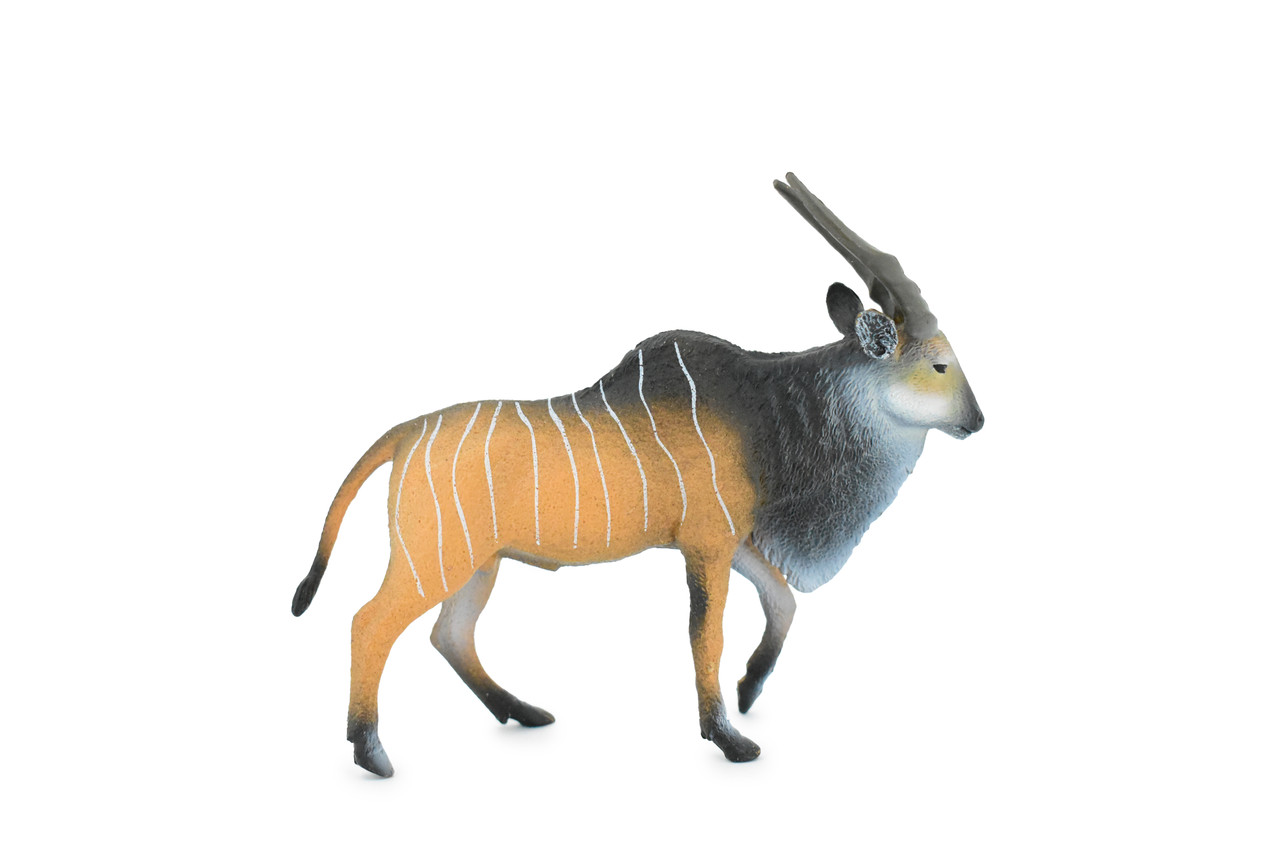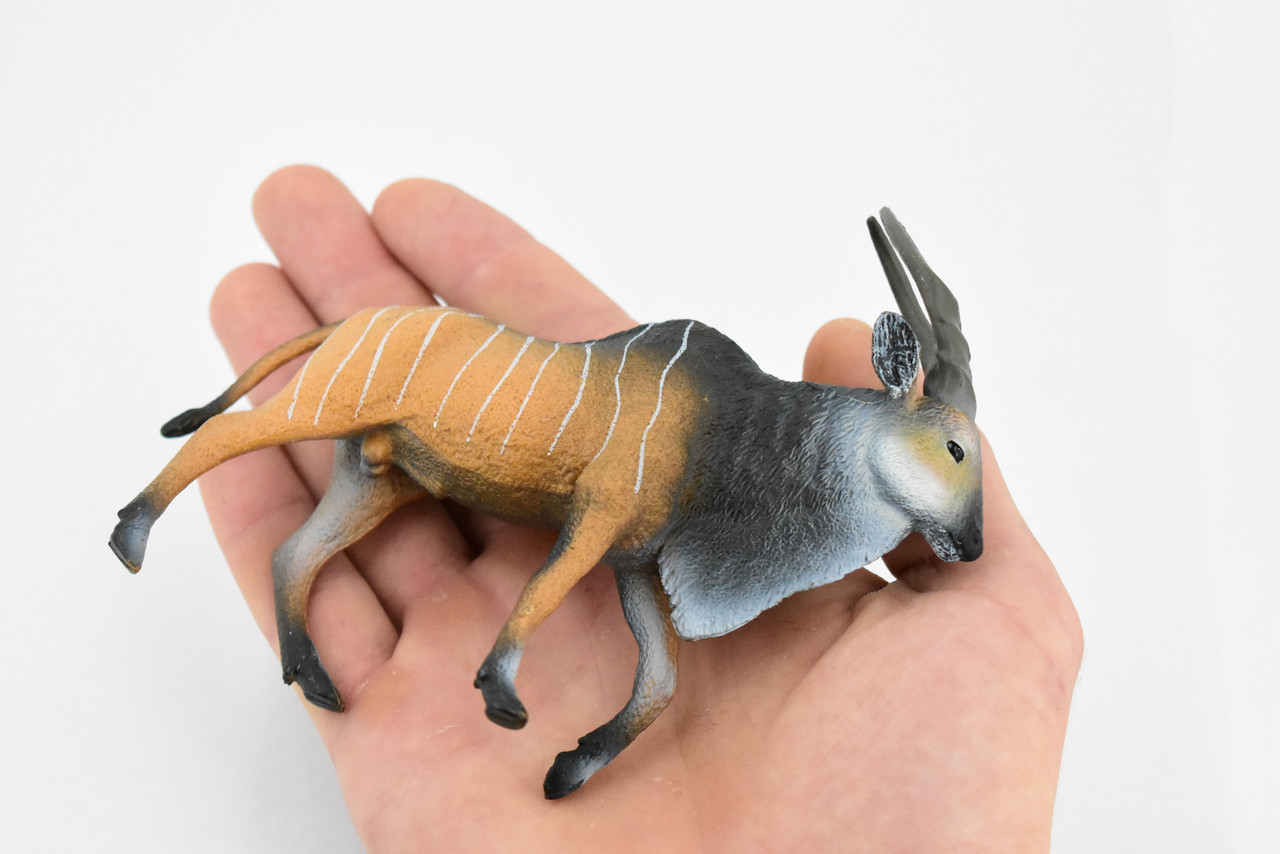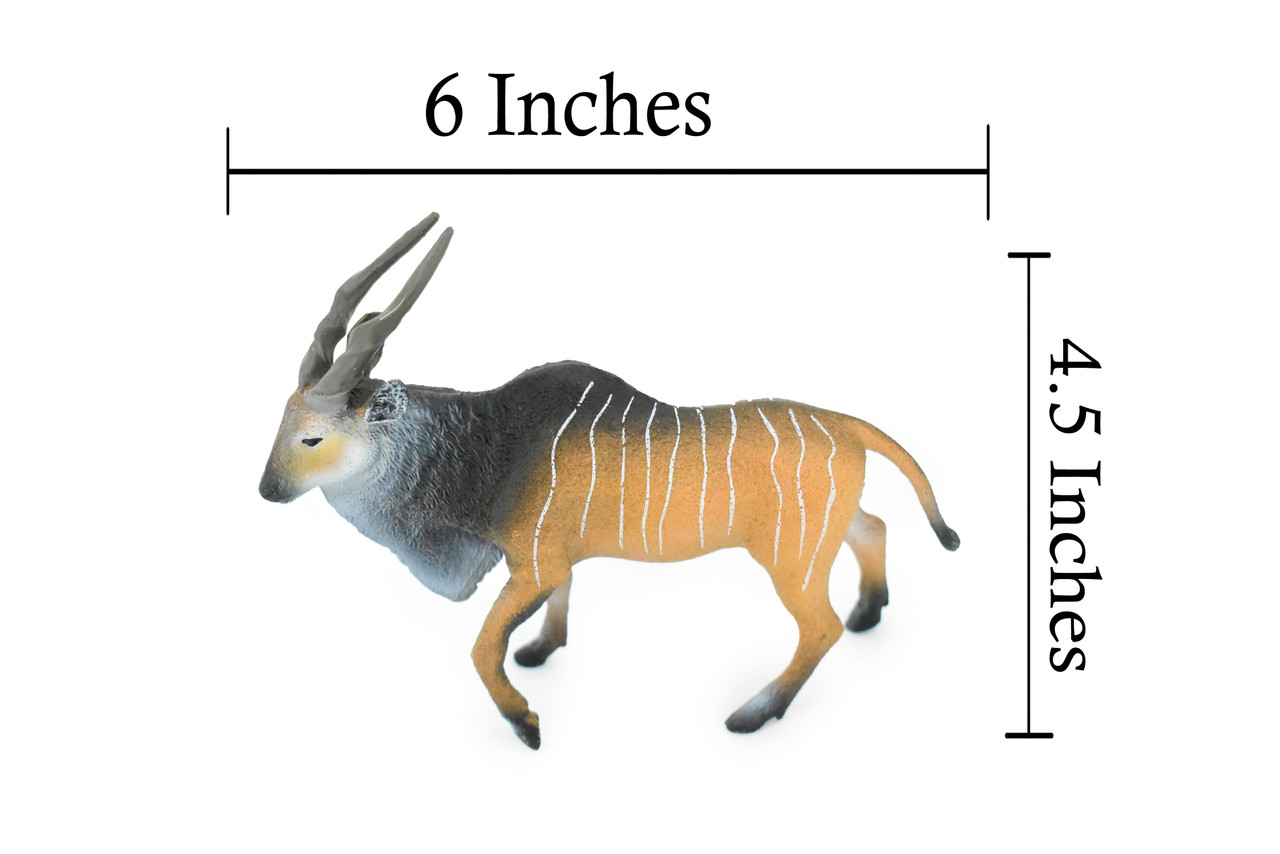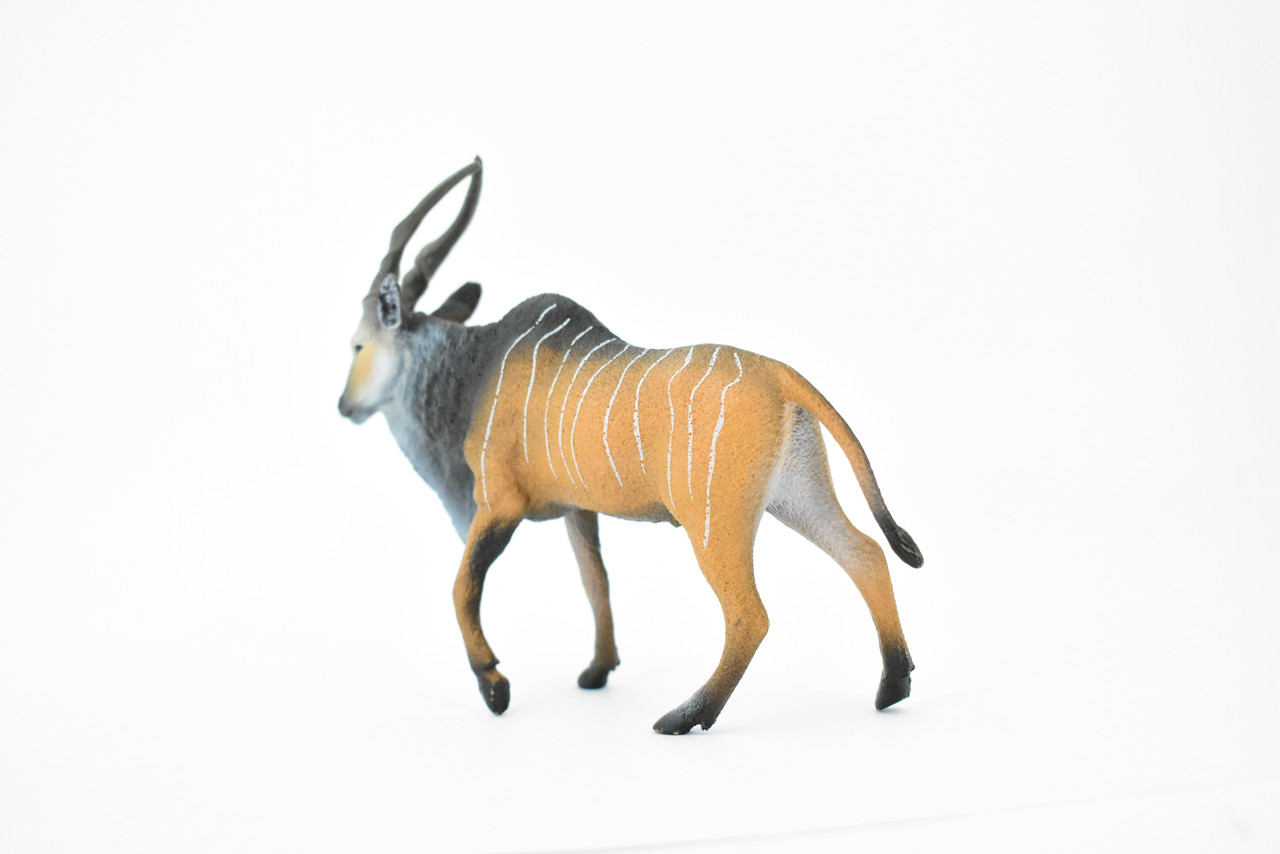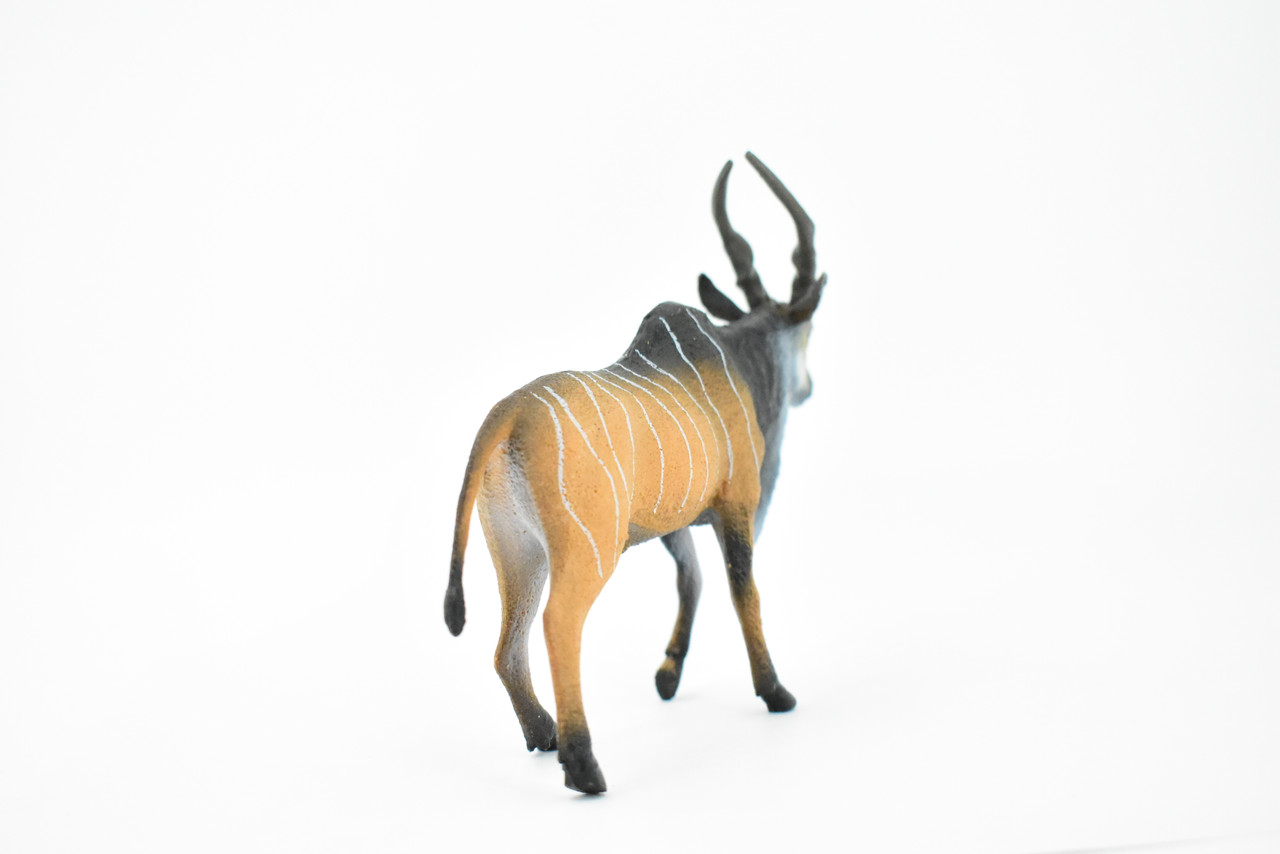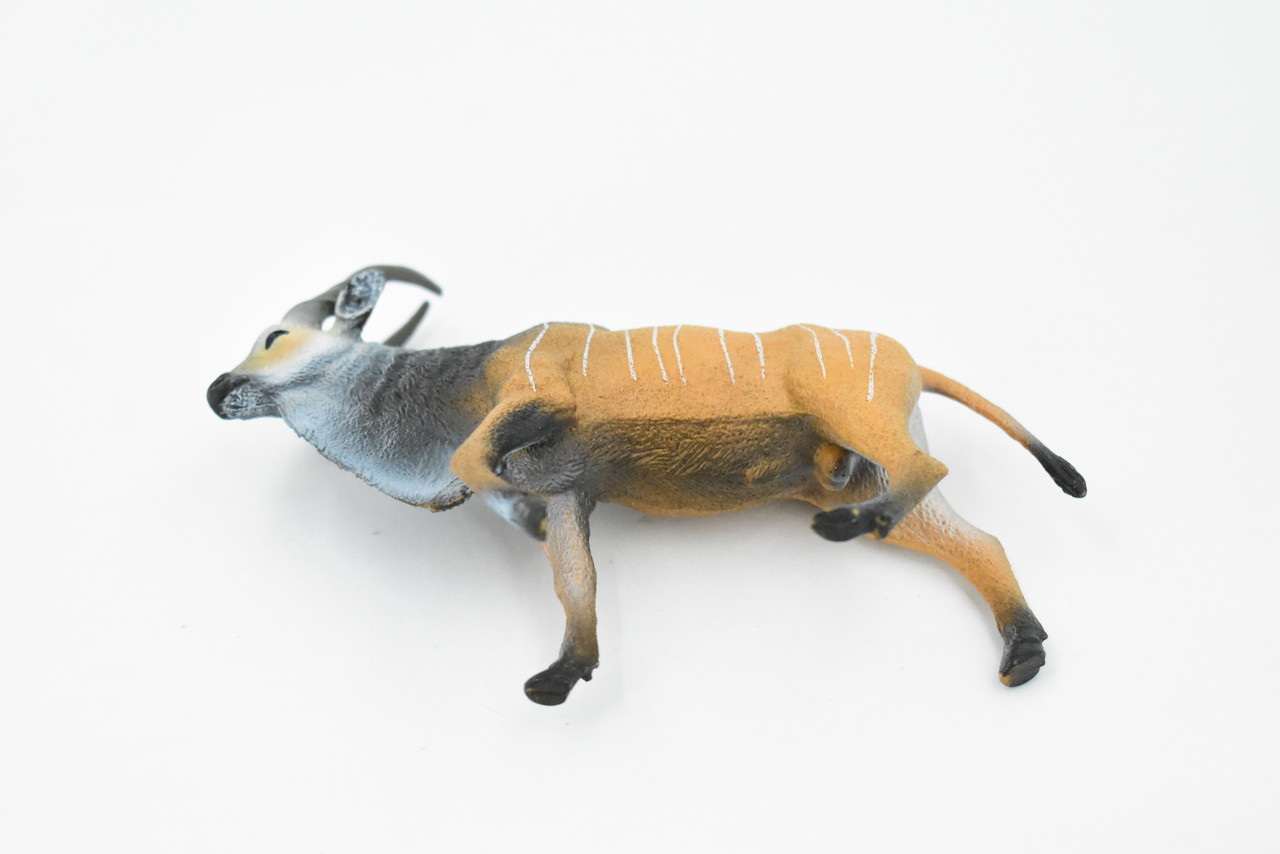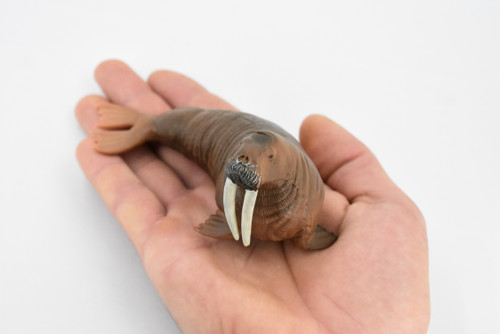Product Description
The cow-like eland is the world’s largest antelope. However, it has the endurance to maintain a trot indefinitely and can jump a 1.5 meter (4 feet) fence from a standstill. Both males and females have horns that spiral tightly, though female horns tend to be longer and thinner. Usually fawn or tawny-colored, they turn gray or bluish-gray as they get older; the oldest animals become almost black. A tuft of black hair grows out of the male’s prominent dewlap, the loose fold of skin that hangs down from the neck. Adult males also have a mat of hair on the forehead that grows longer and denser as the animal ages.
The common eland (Taurotragus oryx), also known as the southern eland or eland antelope, is a large-sized savannah and plains antelope found in East and Southern Africa. It is a species of the family Bovidae and genus Taurotragus. An adult male is around 1.6 m (5.2 ft) tall at the shoulder (females are 20 cm (7.9 in) shorter) and can weigh up to 942 kg (2,077 lb) with a typical range of 500–600 kg (1,100–1,300 lb), 340–445 kg (750–981 lb) for females). It is the second-largest antelope in the world, being slightly smaller on average than the giant eland. It was scientifically described by Peter Simon Pallas in 1766.
Mainly a herbivore, its diet is primarily grasses and leaves. Common elands form herds of up to 500 animals, but are not territorial. The common eland prefers habitats with a wide variety of flowering plants such as savannah, woodlands, and open and montane grasslands; it avoids dense forests. It uses loud barks, visual and postural movements, and the flehmen response to communicate and warn others of danger. The common eland is used by humans for leather, meat, and milk, and has been domesticated in many areas. Eland milk contains more butterfat than cow's milk, and can keep longer without pasteurising.
It is native to Angola, Botswana, the Democratic Republic of the Congo, Eswatini, Ethiopia, Kenya, Lesotho, Malawi, Mozambique, Namibia, Rwanda, South Africa, South Sudan, Tanzania, Uganda, Zambia, and Zimbabwe, but is no longer present in Burundi. While the common eland's population is decreasing, it is classified as of least concern by the International Union for Conservation of Nature.
Collectible Wildlife Gifts is the market leader in providing high quality, realistic toys of all types! Every one of our items is heavily inspected for quality craftsmanship and authenticity. Our products make great gifts for your family and friends! Additionally, our lifelike animal figurines and plush make for great displays and educational sets. We are happy to serve our wide range of clientele from parents to educators, gift shop owners and many more!
Our team works hard to ensure you get a great toy. All products from CWG are checked for quality to ensure you receive the order in perfect condition.
From plush sharks to educational animal growths cycle we offer the perfect toy or gift for any occasion. Our products have been ordered by educational groups, aquariums, zoos, and more.
Great customer service is guaranteed when you order from Collectible Wildlife Gifts, we want you to love your toy and have a simple ordering process, we are happy to assist with inquiries!

